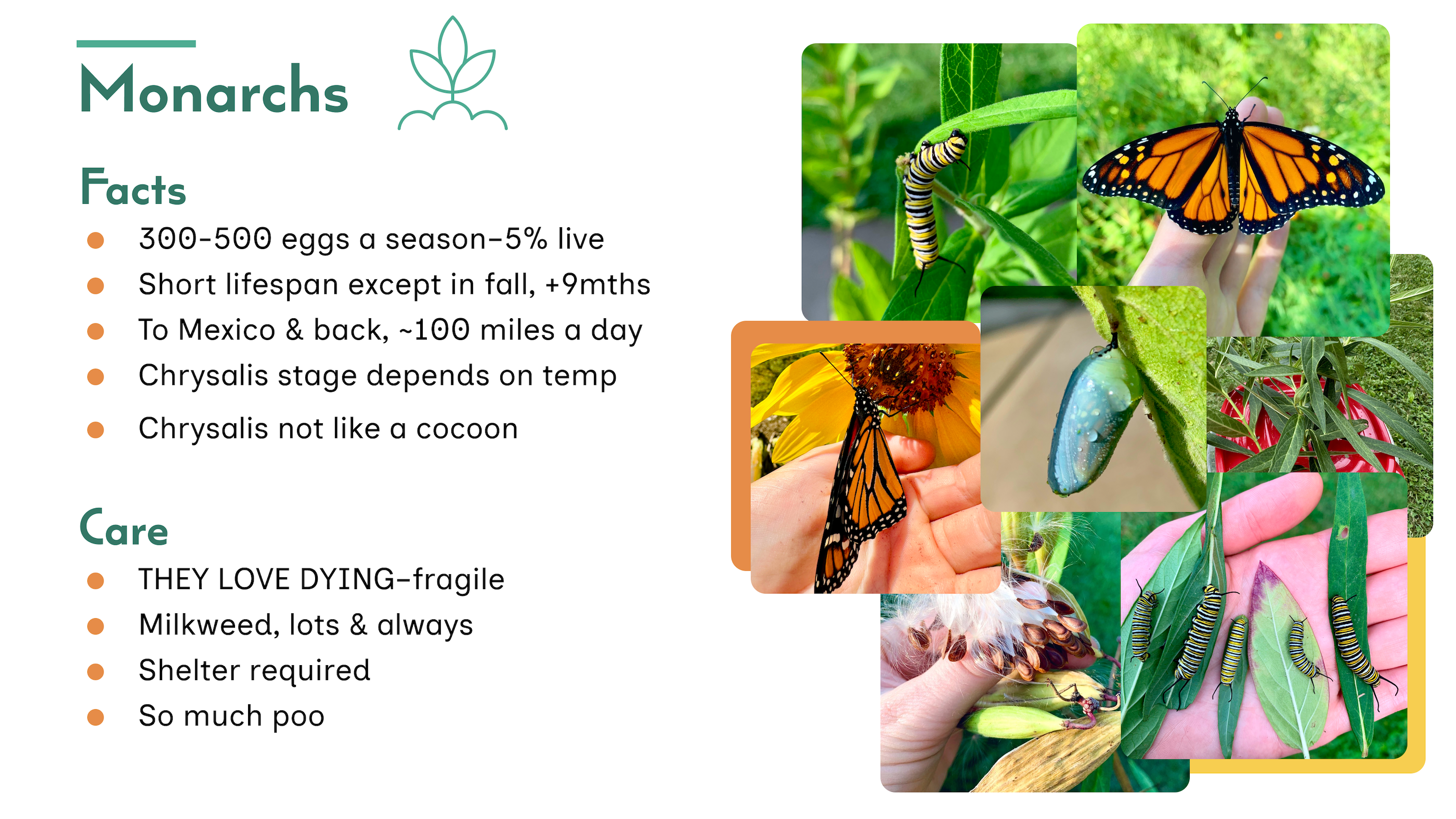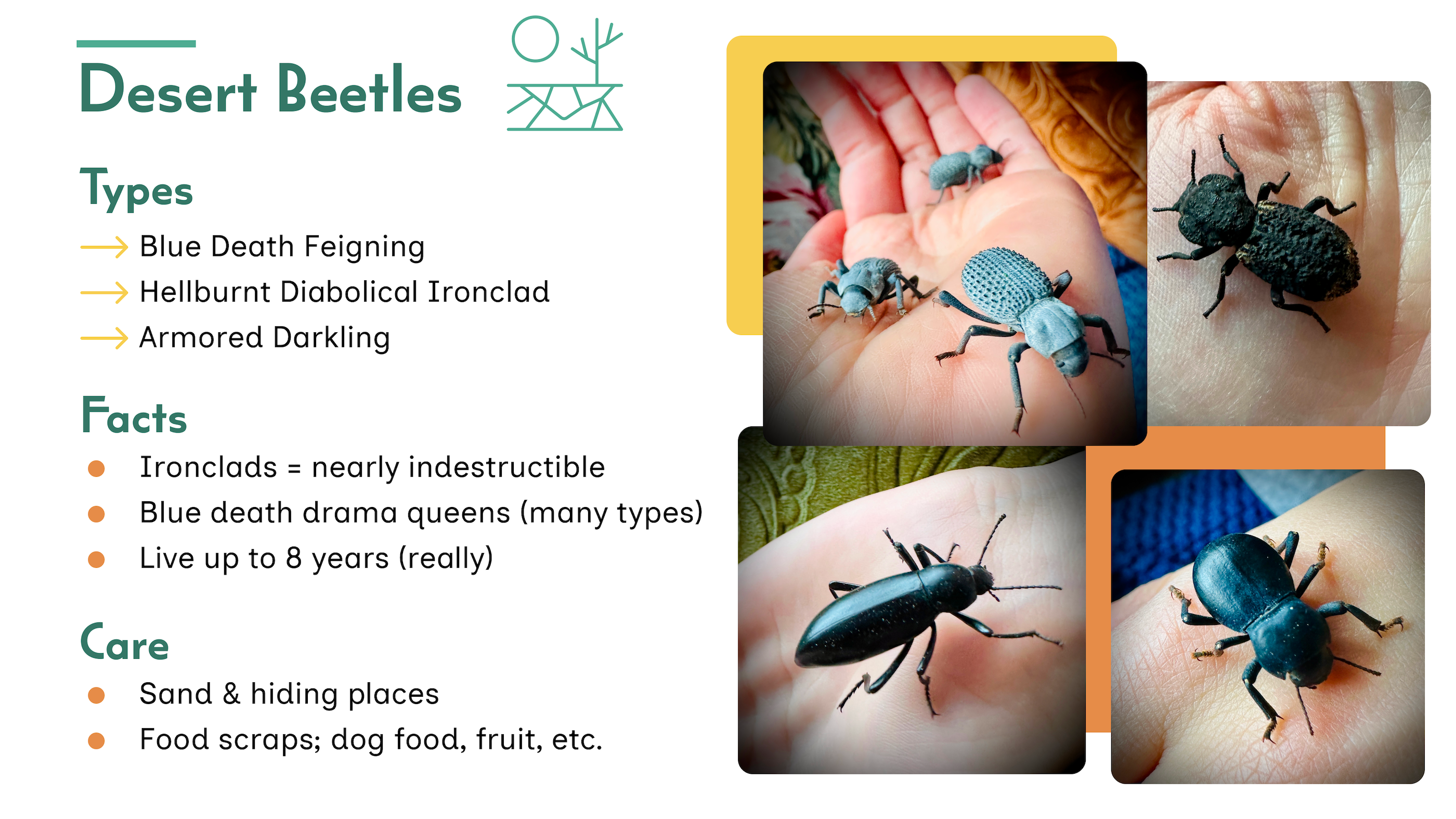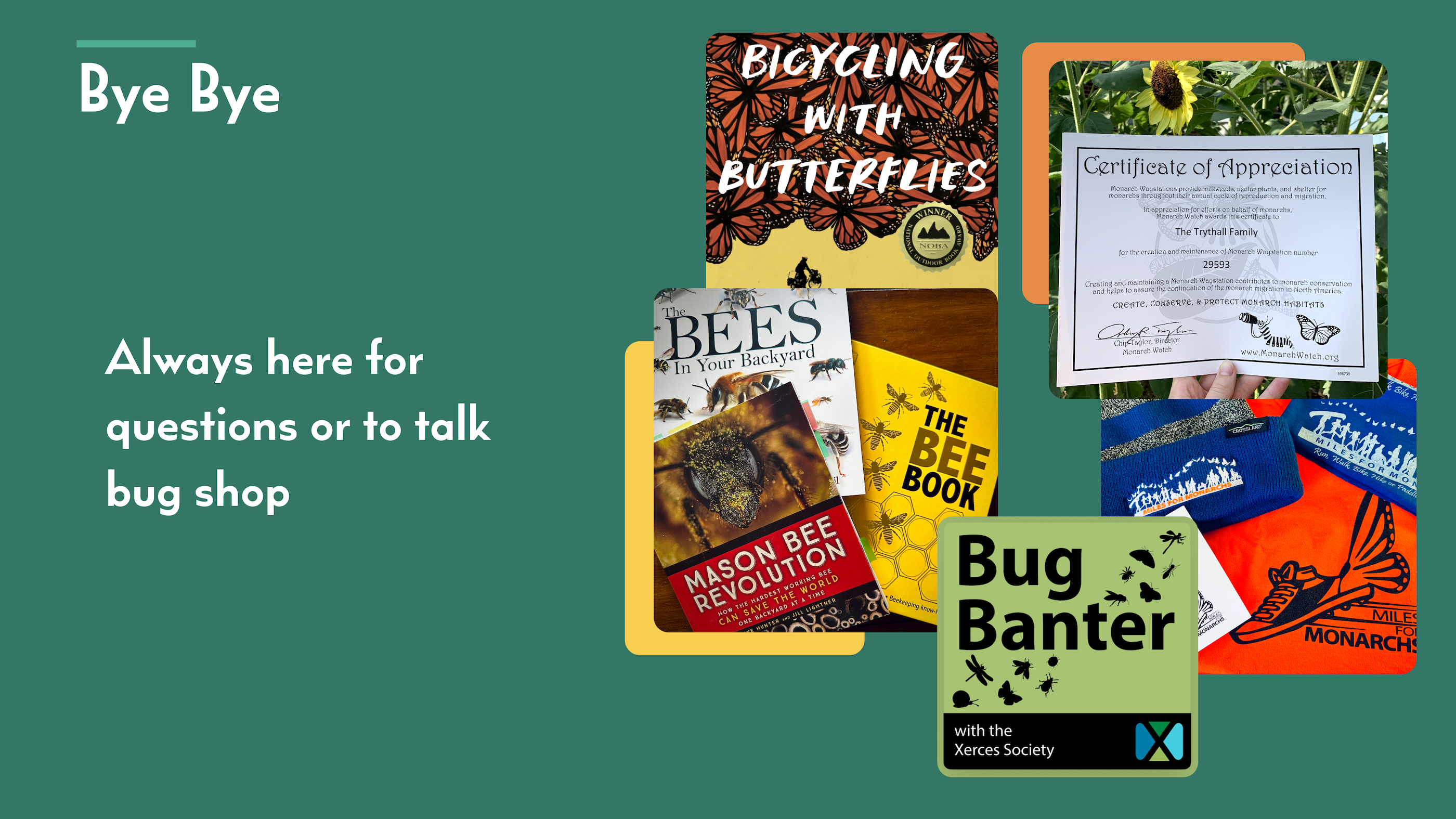07 October 2023
I recently put a WEIRD presentation together for a hobby happy hour in the Wiggle Work community: Bonkers for Bugs. It focused on the three primary types of bugs my son and I raise together, the three Bs–bees, butterflies, and beetles. It was a lot of fun to sort through all these hundreds of pics from over the years and fully realize the important role it has played in our lives and in our relationship. The bugs themselves are undoubtedly very cool, but more than that, it’s a hobby that fostered curiosity and research, created bonding and “hyper-focus” opportunities, and drove an appreciation for pollinators and nature. So, here’s that presentation in blog form.


In fully accepting the weirdness of this path, I felt compelled to address this question right away. As a child, I spent all my time in the woods collecting bugs in jars for a treehouse. It was impossible for me to hit an “eww, gross” threshold with this type of stuff and I truly lived for catching frogs and appreciated every animal or insect I came across. This hobby got me through many challenging times. Even in therapy as an adult, when crafting a “happy place” to retreat to mentally, I choose this setting with these creatures.
I have a son who also loves bugs, which has led to this fascination carrying over into adulthood. Bug keeping quickly becomes a natural next step in just being curious about what we come across outside. As we learned about the plight of pollinators, it became a goal to have any small hand we could in helping them–so raising them and making sure we have a safe, native yard.
Additionally, we both have ADHD, and I believe this is relevant because it provides a unique opportunity to hyper-focus when you want to. Alternatively, you can forget about them for days and they are completely fine; it’s so flexible and stress-free. There’s a chance to get as involved and weird with it as you want, which can even vary daily.

There are many benefits in addition to what I’ve already mentioned. This is a low barrier-to-entry hobby, which can be very hard to find–it can cost nothing. But if you wish, there’s a lot you can get into. Habitat design can be very involved and a great creative outlet. It’s fun to experiment with scenery decor and always try to make the process of raising them as efficient and impactful as possible, specifically regarding bees and butterflies.
Traditional mindfulness and meditation can be challenging to achieve for many. This hobby is a bit of a hack since it enables you to get completely caught up in what you are doing. So, you’re really noticing fine details in the beauty you get to witness. The line thickness of each monarch, timing the days it takes a chrysalis to open as a butterfly, which bee tube locations are proving to be favorites, observing what foods the beetles like best, and even which ones are proving to be the piggies of the group. There’s endless opportunity to escape and lose yourself in this buggy world.

We notice and appreciate all bugs but have specifically chosen to raise leafcutter bees, monarch butterflies, and three different types of desert beetles. This presentation focuses on some facts, care, and photos of these three besties. We’ve learned a lot about them over the years through research and trial and error, including where to buy them.

Leafcutter bees are mind-blowing. There are over 1,500 species in the world. They are solitary bees, like 90% of bees in the US, and so they are not aggressive like honey bees since they don’t have a hive mind. They are significantly better pollinators as well.
They live in tubes in sort of an apartment setup and need flowering trees and bushes within a 200-300 foot radius of their house. There can be two generations a year, and you’ll 100% regret not using a bird guard to protect them from birds looking for a cute, cozy home.
I wrote more about leafcutter bees recently here.

The bug that started it all: monarch butterflies. These stunners lay 300-500 eggs a year, with about a 5% success rate. They live for about 4-6 weeks, except for the final generation of the year that makes the long journey to Mexico and back and living 9+ months instead. I find this fact especially incredible since it proves they can physically live this long but generally only get those few weeks instead.
I’ve tried raising them in the yard with minimal interference, with a 0% success rate. They need shelter and access to milkweed (a lot) around the clock. They don’t form cocoons; instead, they themselves turn into the chrysalis–truly otherworldly.
They are fragile and the most demanding of the bugs we keep.
I wrote more about monarchs recently here.

For desert beetles, we focus our efforts on three types:
Ironclads are nearly indestructible and are even studied from an engineering perspective to gain insight into how they can survive getting run over by a car without getting crushed; it has to do with the way their wing “plates” have fused. Blue Death Feigning beetles are the puppy dogs of the beetle world. They have cute little personalities and are drama queens when scared, turning over on their backs to play dead.
These particular beetles live for up to eight years, which is not at all typical of beetles or bugs in general. We have desert-themed tanks to keep them in and feed them food scraps from the kitchen. They lose their minds over strawberries.

Looking forward, we are always dedicated to making habitat improvements. When it comes to bees and butterflies, we strive for better survival rates each year. Beyond that, we have our eyes on some mantises, have looked into bug pinning to create unique displays, and are on a beetle waitlist for some very cool Ironclad beetles that look like cutie cows.

This hobby has opened up endless new opportunities regarding things to get into in our free time. We spent a spring preparing our yard to be a certified monarch waystation, listen to bug podcasts, read bug books, and participate in bug communities. I’m so grateful for what they’ve given the family and will happily supply them with milkweed, berries, and elderberry trees forever.
I am an easily excitable person in general, and bug talk is no exception. If there’s anything you’d like to talk about, I’m on Mastodon and hang out in the Wiggle Work community.
See you out there, bug nerds.
